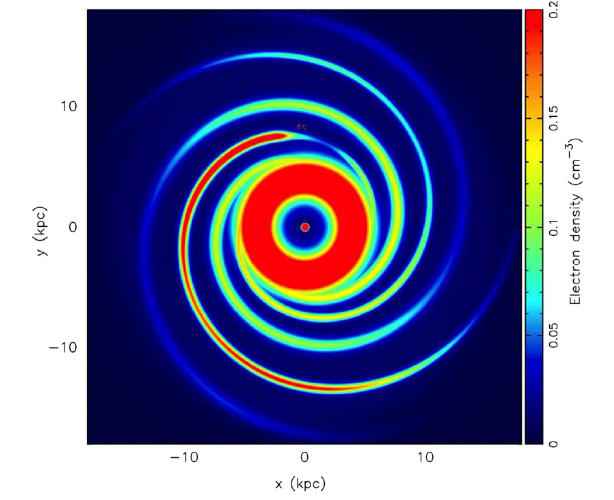|
Distances to astronomical objects are often difficult to estimate, but are of fundamental significance. The origin, evolution, distribution and radiation characteristics of pulsars, are all directly related to the determination of its distance . At present, more than two thousand of pulsars have been detected, but just one-tenth of pulsar distances have been estimated(independent of the model).Fast radio bursts (FRBs)are unresolved, large dispersion and million second flashes found in parts of the sky. FRBs distances are significant to analyze its origin and location.in 17 currently known FRBs, only two of them have red shifts.
With the advent of pulsar , astronomers found that the electron-density model can be built with pulsar distances and DM. This model can be used to estimate pulsar distances based on their dispersion measures and the accurate measurements rely on the amount of pulsars and the accuracy of model-independent distances. NE2001 is a relatively recent model, which describes the distribution of free electrons in the Galaxy.
Recently, J.M.Yao, a PhD student of Xinjiang Astronomical Observatory presented a new electron density model-YMW16. Compared to the earlier models, YMW 16 has the following advantages: first, the amount of pulsars with model-independent distances and the accuracy of galactic structure have been increased; Second, the amount of detectable pulsars in Magellanic Clouds have been increased and the understanding on its structure has been improved; Third, FRBs have been detected and intergalactic medium distributions have been studied. YMW16 in 95% of model predictions are nearly 40%better than NE2001, and it is the first to estimate Magellanic Cloud pulsar distances and FRBs distances. Under the guidance of Professor R. N. Manchester from Australia Telescope National Facility, and Na Wang , research fellow of Xinjiang Astronomical Observatory, J.M.Yao successfully completed this research. The results are published on the <The Astrophysical Juurnal>(2017,835, 29).

Electron density in the Galactic plane. Spiral arms have a predetermined logarithmic-spiral form and generally decay exponentially at large Galactocentric radii. Exceptions are in the Carina–Sagittarius arm where there are overdense and underdense regions in Carina and Sagittarius respectively. The Gum Nebula and Local Bubble features are faintly visible near the position of the Sun.
Article link:http://ads.bao.ac.cn/abs/2017ApJ...835...29Y
|